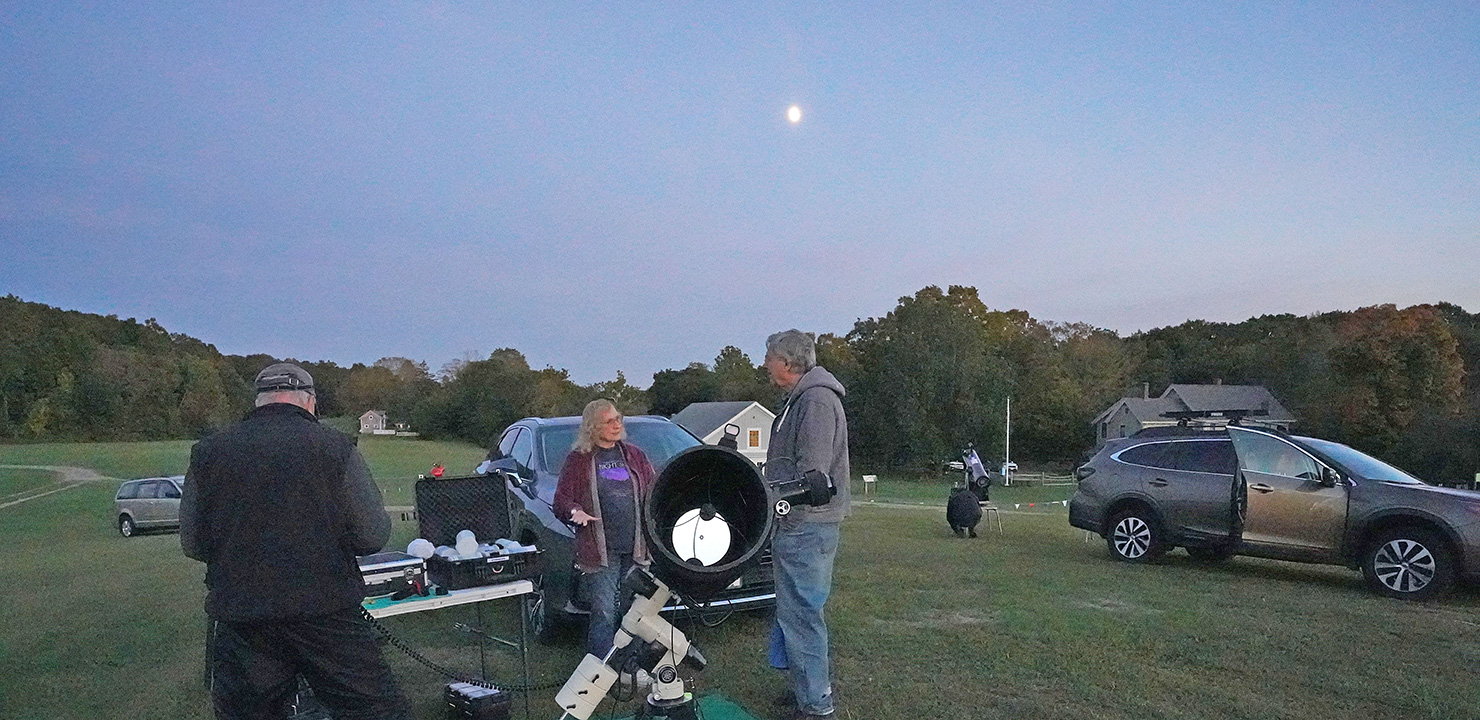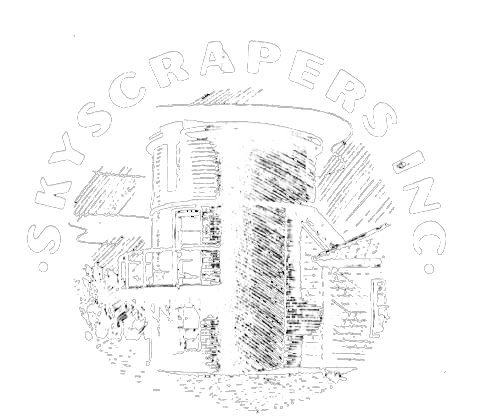
Starry, Starry Autumn Nite at Chase Farm
by Jim Hendrickson
Thursday, October 2, 2025 was our rain date for the Starry, Starry Autumn Nite event at Chase Farm in Lincoln, originally scheduled for the previous Thursday night.
We arrived at sunset and set up on the small hill near the visitor center as usual, with Bob Janus having his 8-inch Dobsonian, John Kocur with the equatorially mounted 8-inch Newtonian, Jim Hendrickson with his 4-inch refractor, and Francine Jackson’s Astroscan.
Francine opened with a presentation in the visitor center, highlighting the constellations and planets visible during autumn evenings, mentioning that we are still near solar maximum and that aurora borealis can still be seen at any time, as well as three notable comets moving through the sky at this time, although all of them were either too faint or too low on the horizon for us to find during the star party.
The 79% gibbous waxing Moon brightened the sky enough to make observing fainter objects difficult, but cast a pleasant illumination across the fields of Chase Farm.
The highlight of the night was of course Saturn, with its ring plane showing a narrow 1.5° angle. Saturn’s large moon Titan was easily visible, and some observers were able to see Dione and Rhea on the opposite side of the planet.
Other objects observed were the Double Double, Mizar & Alcor, Gamma Andromedae, and M13.
Once again, as has become common during these evening events, no visible passes of the International Space Station were visible.
Among the 30 or so visitors was Jack Owen, a former colleague of ours who retired from teaching astronomy at Community College of Rhode Island a few years ago. Francine and Jim would often visit him on Thursday nights at the Margaret M. Jacoby Observatory
One of the things that adds an extra dimension to night sky events is to listen for local wildlife. We typically have crickets, and during spring and summer, frogs are often present, and we occasionally hear nocturnal birds in the distance. During Thursday night’s stargazing event, we were entertained by some very vocal killdeers during much of the evening. We learned that these birds typically forage in large fields or pastures, and can be active on nights that are brightly lit by the Moon. We certainly enjoyed their presence, and they added to the fun of the evening.
This event concluded our Chase Farm astronomy nights for 2025, and we look forward to returning in the spring.



